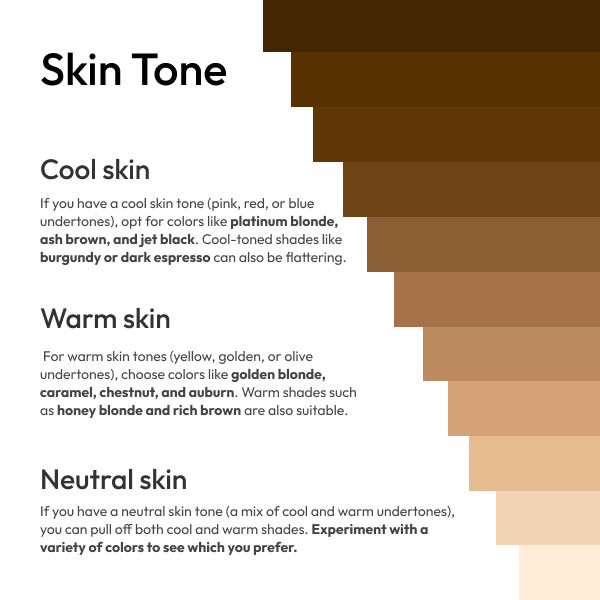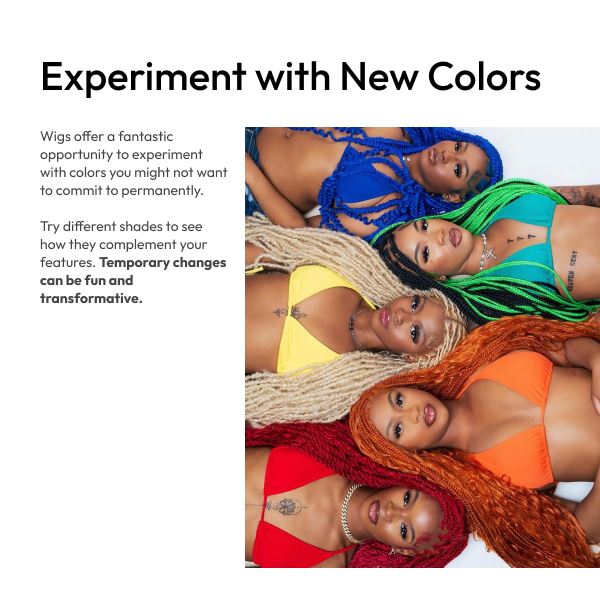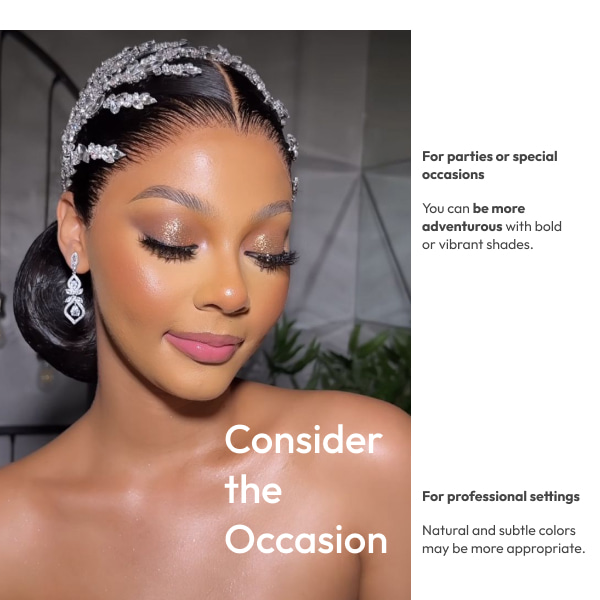




Find your ideal wig color: Tips and Tricks
Introduction
Choosing the right wig color can enhance your overall look and boost your confidence. However, with so many colors and shades available, making the right choice can be overwhelming. This guide will help you understand how to choose a wig color that complements your style and complexion, and explain how to use wig color charts to find the perfect match.
How to Choose a Wig Color
Consider Your Skin Tone
Your skin tone plays a crucial role in determining which wig colors will look best on you. Here’s how to choose colors based on your skin tone:
- Cool Skin Tones: If you have a cool skin tone (pink, red, or blue undertones), opt for colors like platinum blonde, ash brown, and jet black. Cool-toned shades like burgundy or dark espresso can also be flattering.
- Warm Skin Tones: For warm skin tones (yellow, golden, or olive undertones), choose colors like golden blonde, caramel, chestnut, and auburn. Warm shades such as honey blonde and rich brown are also suitable.
- Neutral Skin Tones: If you have a neutral skin tone (a mix of cool and warm undertones), you can pull off both cool and warm shades. Experiment with a variety of colors to see which you prefer.
Match Your Natural Hair Color
If you’re new to wearing wigs, starting with a color close to your natural hair color can make the transition easier. This helps you get used to the look and feel of wearing a wig without a drastic change.
Experiment with New Colors
Wigs offer a fantastic opportunity to experiment with colors you might not want to commit to permanently. Try different shades to see how they complement your features. Temporary changes can be fun and transformative.
Consider the Occasion
Think about where and how you plan to wear the wig. For professional settings, natural and subtle colors may be more appropriate. For parties or special occasions, you can be more adventurous with bold or vibrant shades.
Use Virtual Tools
Many wig retailers offer virtual try-on tools that allow you to see how different colors look on you. These tools can be incredibly helpful in visualizing the final result before making a purchase.
Understanding Wig Color Charts
What is a Wig Color Chart?
A wig color chart is a reference guide provided by wig manufacturers that displays the various colors available for their wigs. Each color is assigned a specific code or name, helping you identify and choose the exact shade you want.
How to Read a Wig Color Chart
Wig color charts typically consist of a range of swatches, each representing a different shade. Here’s how to understand them:
- Color Codes: Most wig colors are identified by a combination of letters and numbers. For example, 1B is a common code for off-black, while 613 refers to platinum blonde. The codes help standardize colors across different brands.
- Base Colors: The base color is the primary color of the wig. For example, 4 (medium brown) or 27 (strawberry blonde).
- Highlight Colors: Some wigs have highlights or lowlights, indicated by additional numbers or letters. For example, 4/27 means a medium brown base with strawberry blonde highlights.
- Blended Colors: Blended colors combine multiple shades to create a natural, dimensional look. These are often indicated with a combination of color codes, like P4/27 or F4/27.
Using a Wig Color Chart
- Identify Your Desired Shade: Start by identifying the base color that closely matches your natural hair or the new color you want to try.
- Consider Highlights and Blends: Decide if you want a solid color, highlights, or a blended shade. Look for additional codes that indicate these variations.
- Compare Across Brands: Since color codes can vary slightly between brands, use the chart to compare similar shades from different manufacturers.
- Order Color Swatches: If available, order color swatches or samples to see the shades in person. This helps ensure you’re choosing the right color before making a full purchase.
Tips for Choosing the Perfect Wig Color
Start with Natural Shades
If you’re unsure where to start, go for natural shades close to your hair color. Natural shades are easier to match and blend with your complexion.
Experiment with Highlights
Adding highlights or lowlights can give your wig a more natural and dynamic look. They can also add depth and dimension to your hairstyle.
Consider Seasonal Changes
You might want to change your wig color based on the season. Lighter shades are popular in the spring and summer, while darker, richer tones are favored in the fall and winter.
Consult a Professional
If you’re still unsure, consult a professional stylist or a wig specialist. They can provide personalized advice based on your skin tone, facial features, and personal preferences.
Your questions answered
FAQs
How do I know which wig color suits me best?
Consider your skin tone, natural hair color, and personal style preferences. Use virtual try-on tools and color charts to visualize different shades before making a decision.
Can I dye a wig if I don’t like the color?
Human hair wigs can be dyed, but synthetic wigs usually cannot be. If you want the flexibility to change colors, consider purchasing a human hair wig.
What if the color I choose looks different in person?
Colors can appear different on screens versus in person. Ordering color swatches or samples can help you see the actual shade before purchasing the wig.
How often should I change my wig color?
There’s no set rule for how often you should change your wig color. Change it as often as you like, based on your style preferences, seasons, or occasions.
Are there any wig colors that are universally flattering?
Neutral shades like medium brown, caramel, and soft blonde tend to be universally flattering and suit a wide range of skin tones.
How do I use a wig color chart effectively?
Identify the base color you want, consider highlights or blends, and compare similar shades across brands. Ordering color swatches can also help you make an informed decision.